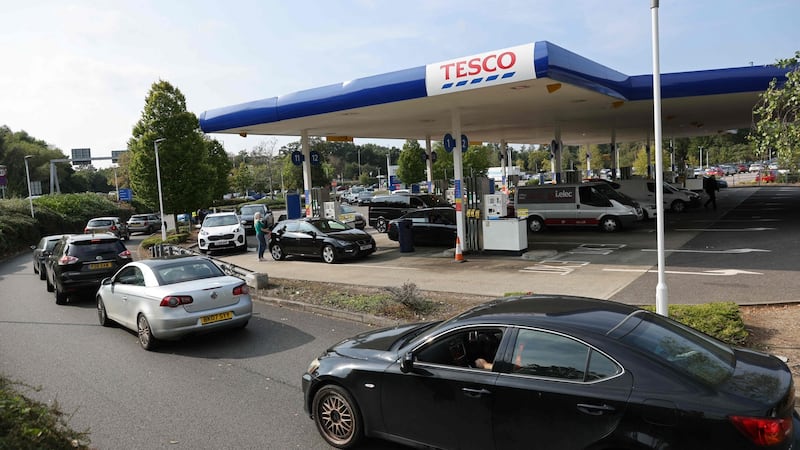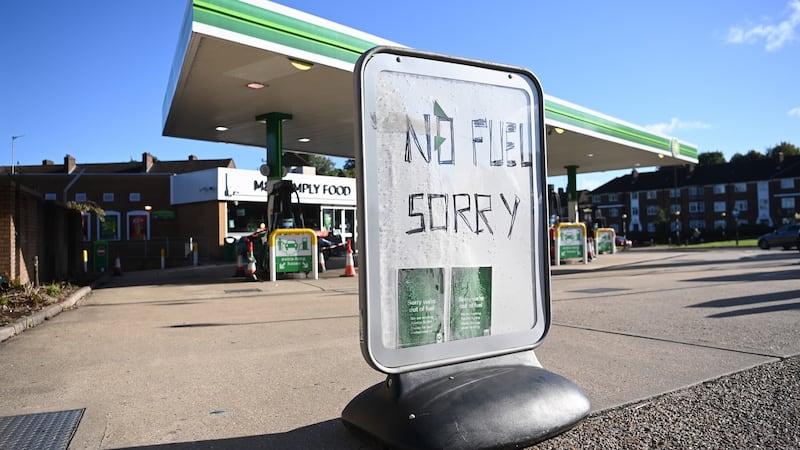Kay Collins has swapped an office and the books of her family's haulage business for a lorry cab and the open road for a few days every week. It is not out of choice but necessity.
The 32-year-old accountant has had to stand in as a lorry driver at Collins Transport – a fourth-generation family business in north Co Cork – because they cannot recruit drivers.
A shortage of 3,000-4,000 lorry drivers has put haulage firms under pressure to keep trucks on the road amid severe disruptions to the global supply chain as a result of the Covid-19 pandemic, exacerbated in western Europe by new post-Brexit border requirements.

"Growing up and having knowledge of the business, you never would have thought it would come to this," says Collins, who now drives trucks to Cork, Dublin, Sligo and Belfast.
“The shortage of drivers is kind of scary at the moment. Where is it going to end? Is it going to stop at shortages on the shelves?”
She is not the only one in the family who finds themselves back behind the wheel part time. Her father and uncle, both managers, are back driving again, as is her brother, a lorry mechanic.
The problem of an industry of ageing drivers has long been flagged: a future skills report as far back as 2015 forecast a demand for just under 7,000 HGV drivers to last year. A follow-up report, in 2018, addressing skills shortages linked to Brexit, said this statistic was “a cause for concern, requiring urgent attention”.

The pinch is being felt now because many eastern European drivers have not returned from extended summer holidays, having found alternative work in Poland’s soaring economy.
“It is very bad at the moment,” says Kay’s father, Michael. “We would normally have drivers on file that would be looking for a job but we haven’t had that for the last 12 months.”
His concerns for the business have changed in the past year but he says he is fortunate to have a brother, daughter and son to call upon to make sure customer orders are fulfilled.
“Before you were always worried about whether you had enough work. Now you are worried about whether you have enough drivers to take on the work,” he says.
“In the haulage business, the phone is always ringing to bring an extra load here and there but we just cannot take it on because we don’t have the drivers to do it. All of these things have a knock-on effect on the economy. Lorry drivers are the backbone of the economy.”
‘National emergency’
Eugene Drennan, the president of the Irish Road Haulage Association, has put the crisis in his industry in stark terms, saying the Government needs to treat the shortage as "an imminent national emergency" or else face similar supply chain shortages as those in the UK, where a dearth of 100,000 drivers has left some supermarket shelves empty.
"It is a very severe crisis that has been many years in the making, but the recent disasters and supply chain shocks with Brexit and the blockage in the Suez Canal are why we are hearing about it now," says Nikolaos Valantasis Kanellos, lecturer in logistics at Technological University Dublin.
The supply chain management analyst says the shortage of drivers in Ireland may seem minor compared with the UK, but the State's reliance on road transportation, which accounts for 99 per cent of goods distributed, makes the problem equally challenging.
In Britain there have been shortages of goods, from milkshakes to building materials. Oil company BP temporarily closed some forecourts because the lack of drivers prevented fuel being transported from refineries. Ireland has not yet suffered the same widespread supply shortages.

"The industry is challenged with not having enough drivers but they are making the best of what they can do," says Aidan Flynn, general manager of the Freight Transport Association Ireland.
Lorry driving has become an unattractive job for a variety of reasons: poor pay and career prospects, long hours on the road, unfavourable conditions, tight and stressful delivery windows, and high insurance premiums for young drivers, who see better work options elsewhere.
Ageing workers
Since Brexit, border checks and red tape have added to the woes of the driver on the UK “land bridge”, whereas avoiding it means long ferry journeys on the direct routes to Europe. With few young drivers entering the industry, the average age has remained stubbornly high, in the 50s.
"No new blood came in, and the old blood have retired," says John Nolan of Nolan Transport, one of the largest haulage companies in the country, and secretary of the IRHA.
Nolan says at one stage the company was “down 100 drivers” out of a full complement of 450. He sees the shortages continuing for the next two to three years and costs in his business rising as a result. Nolan is having to hike pay by 20 per cent to retain his drivers.
“If I don’t do that with my drivers, a rival is going to poach them,” he says.
Paddy Neary (65), from Co Louth, has been driving lorries for many years but is considering leaving the industry next year because of how difficult life on the road has become.
“It is not the same job. Everyone is driving to the clock, so you don’t meet people like you used to,” he says, speaking by phone from Naples during a 10-day return trip to Europe where he has dropped a load of Irish beef and is awaiting instructions for his return load.
“In Ireland most young people are highly educated and just don’t want to do it. Before Brexit, you hopped on a ferry and drove through the UK. Now you go out on direct boats that take much longer – 26, 27 hours is normal. Many young men have given up. They just couldn’t be bothered.”
Apprenticeship drive
To make entry into the business easier and more appealing to younger drivers, apprenticeship courses have been set up. From January, Sligo Institute of Technology in association with the FTAI will offer two-year commercial apprenticeships in logistics and supply chain management, where the apprentice driver will work and have their driving lessons and tests publicly funded.
“We are trying to attract younger people and more women into the industry and improve the image of the industry as a valid choice that offers career opportunities,” says Flynn.
As a more immediate solution, the industry wants the Government to permit a derogation on the driver certificate of professional competence to allow drivers who have retired or left the industry to “get back behind the wheel” and not have to wait until they qualify to drive again.
Kay Collins says it is a pity that more young drivers and female drivers are not given an opportunity to get into the business. She sees driving as a “great thing” for those who want to travel but concedes that the long, uncertain hours can be a turn-off for young people.
“Unless you really love it, people aren’t attracted to it,” she says.
She believes that not being able to find more drivers will have damaging knock-on effects.
“The driver shortage will probably end up with a haulier shortage. It is a low-margin business, and wages have increased because of the driver shortage and because of the demand,” she says. “It is squeezing us even more.”








